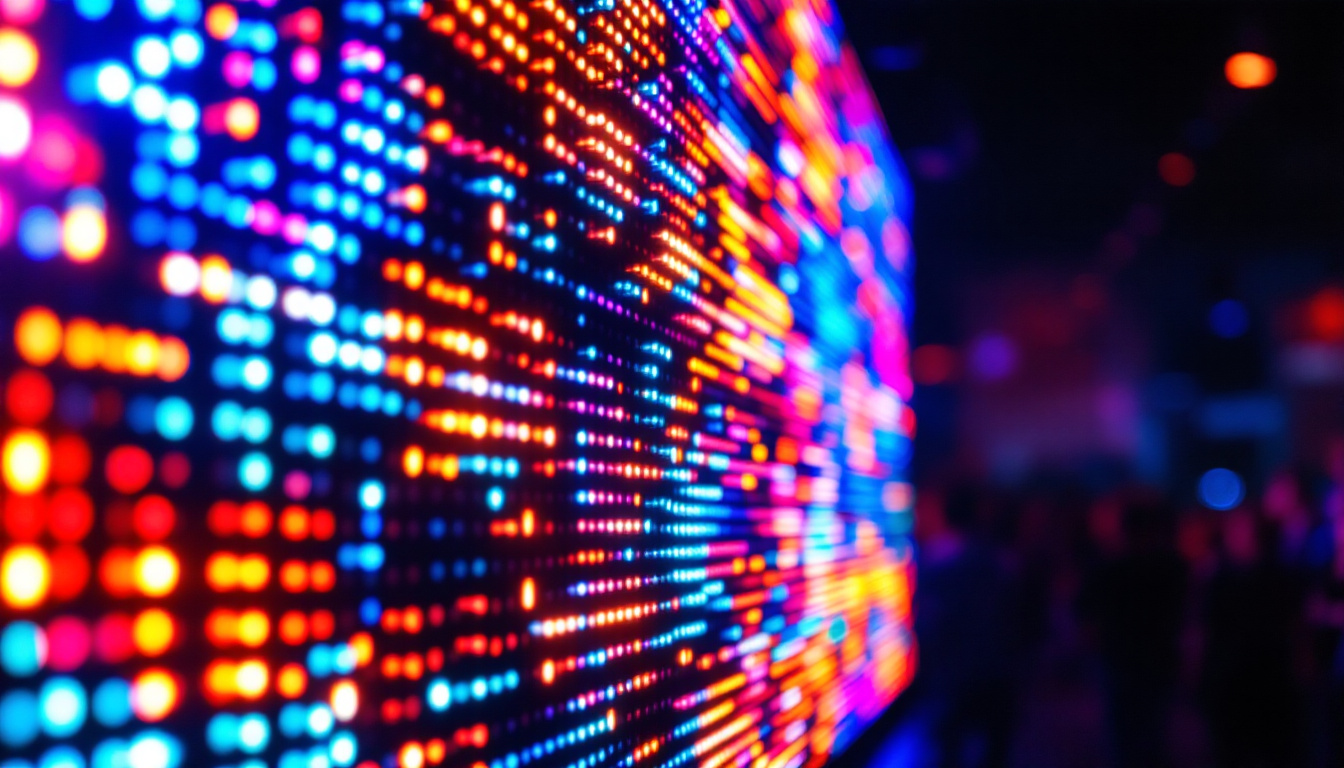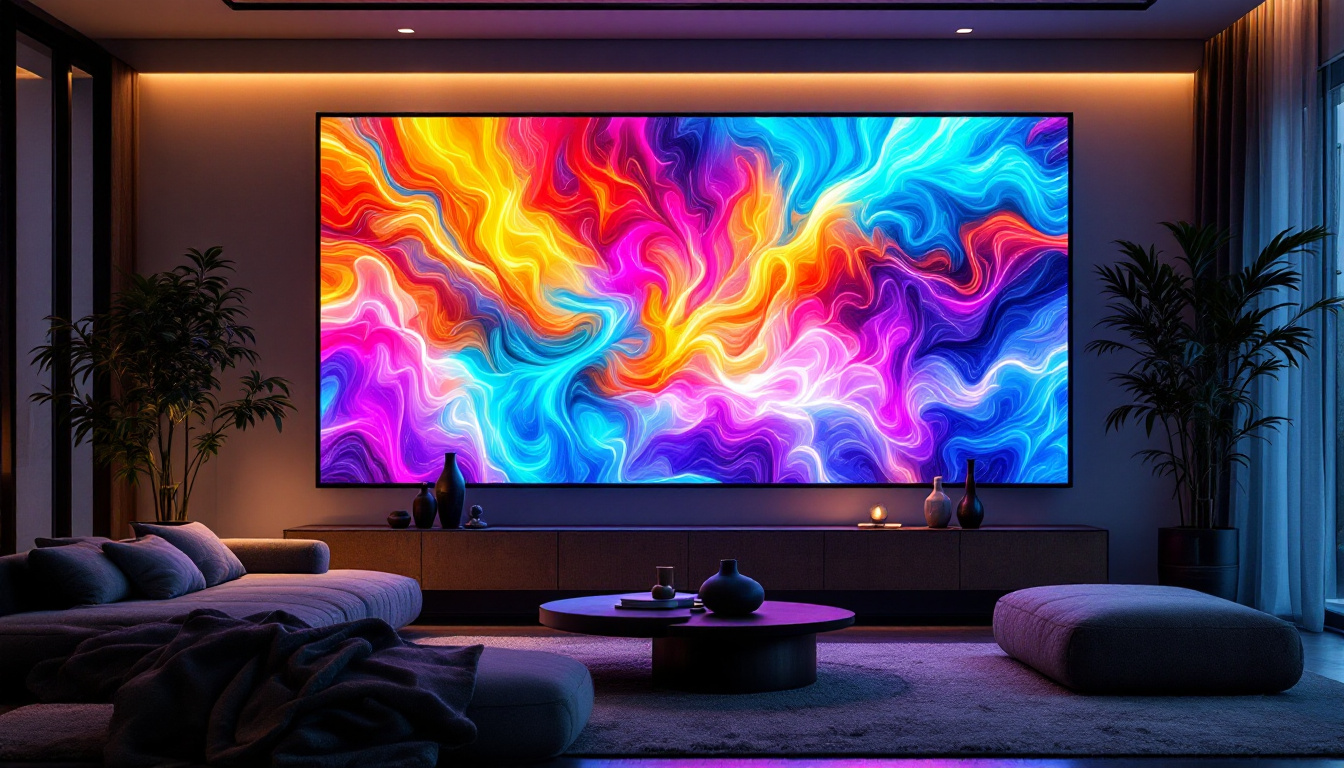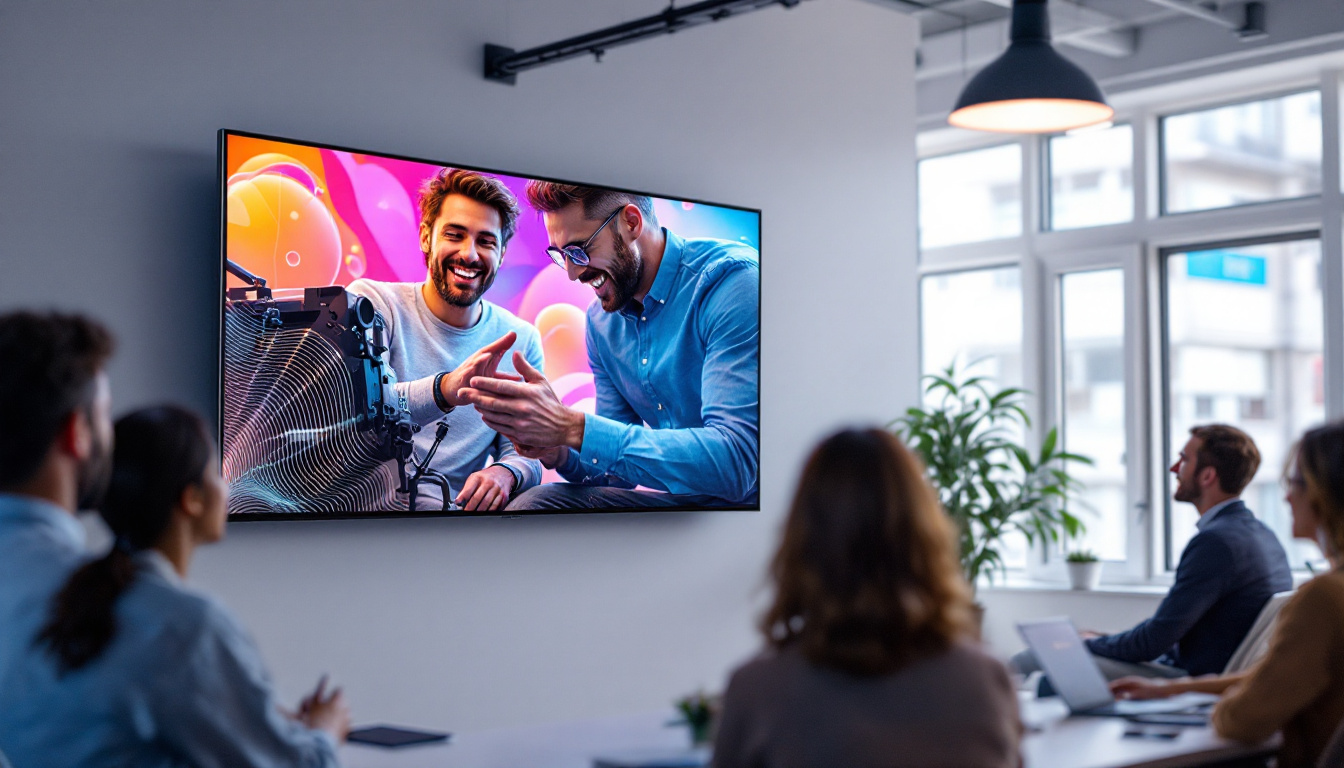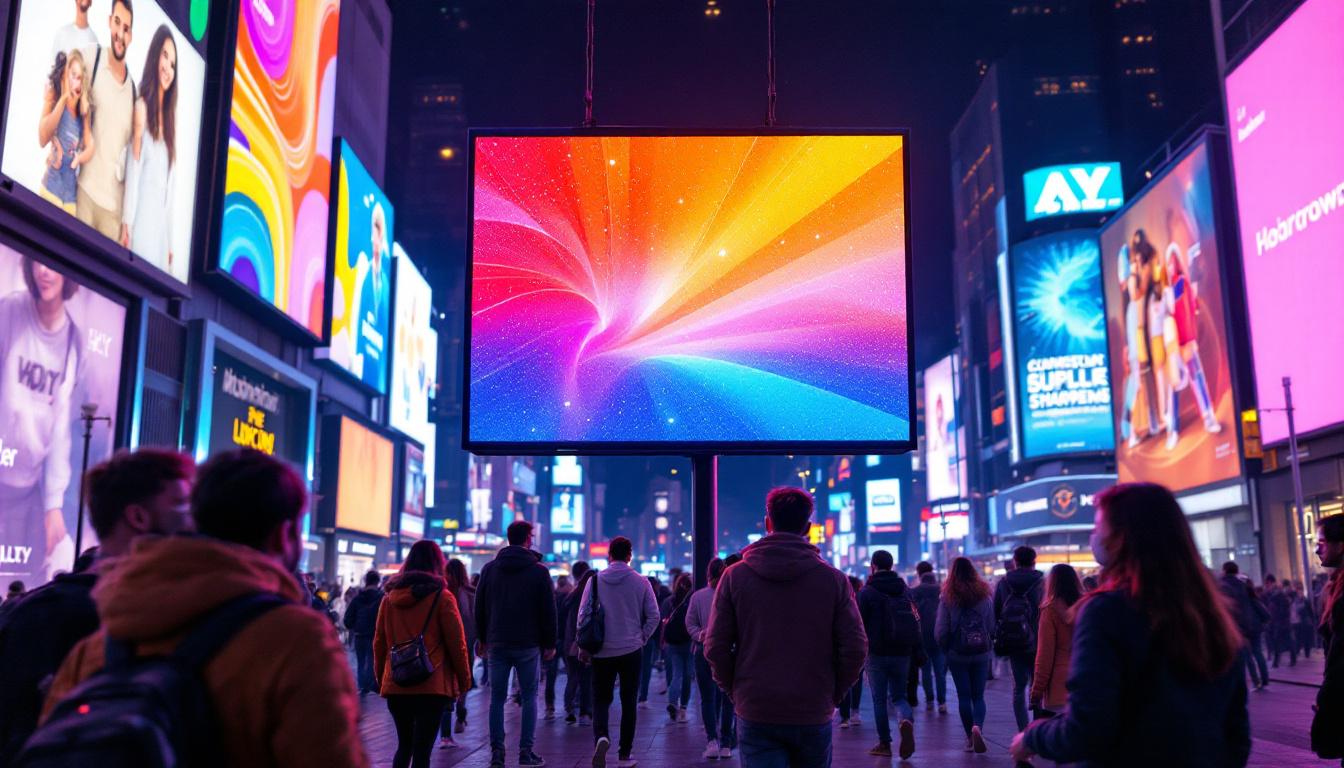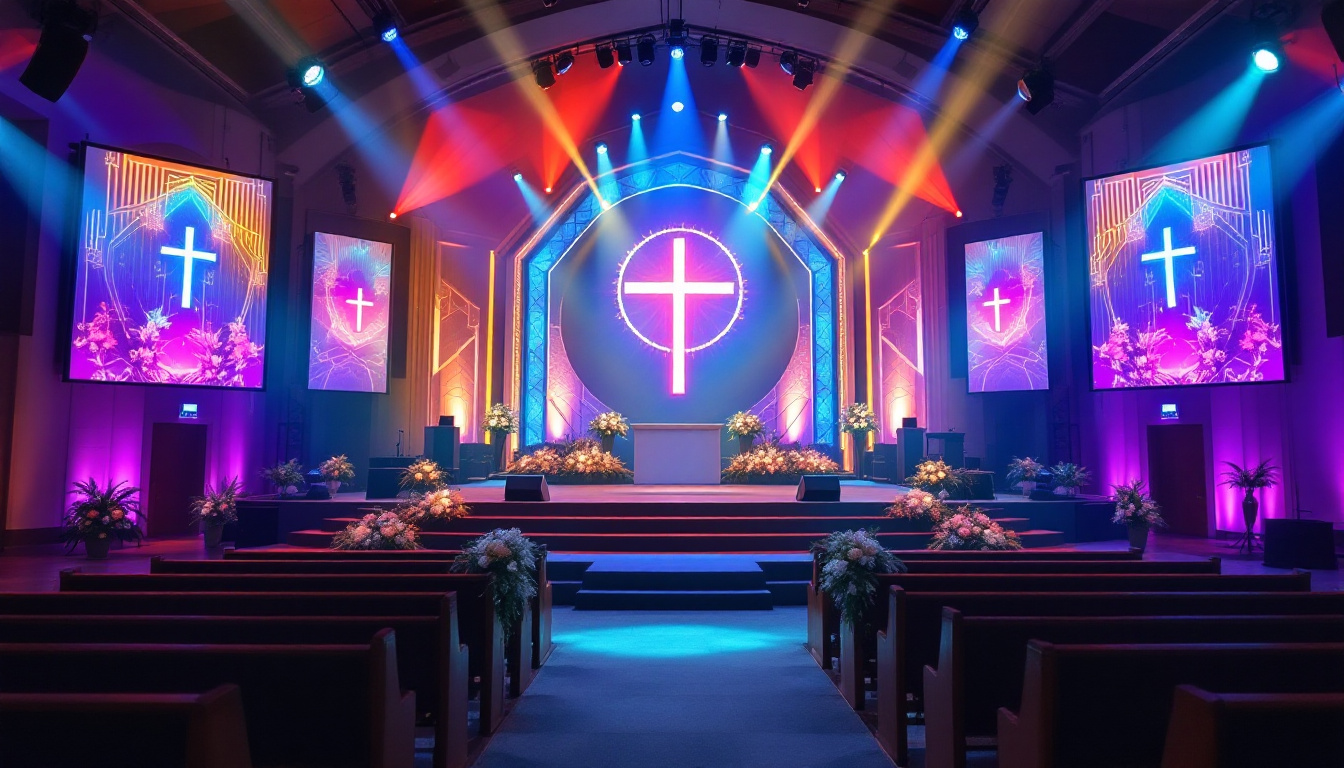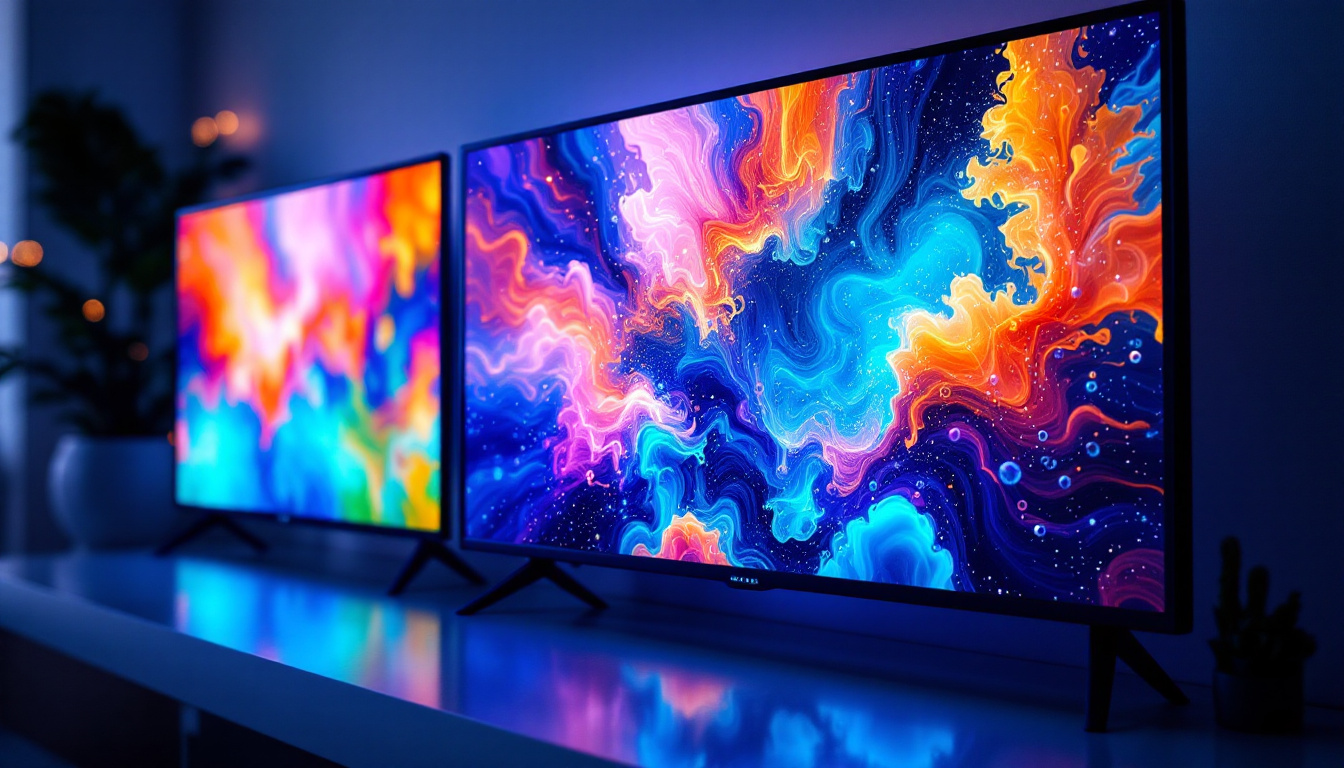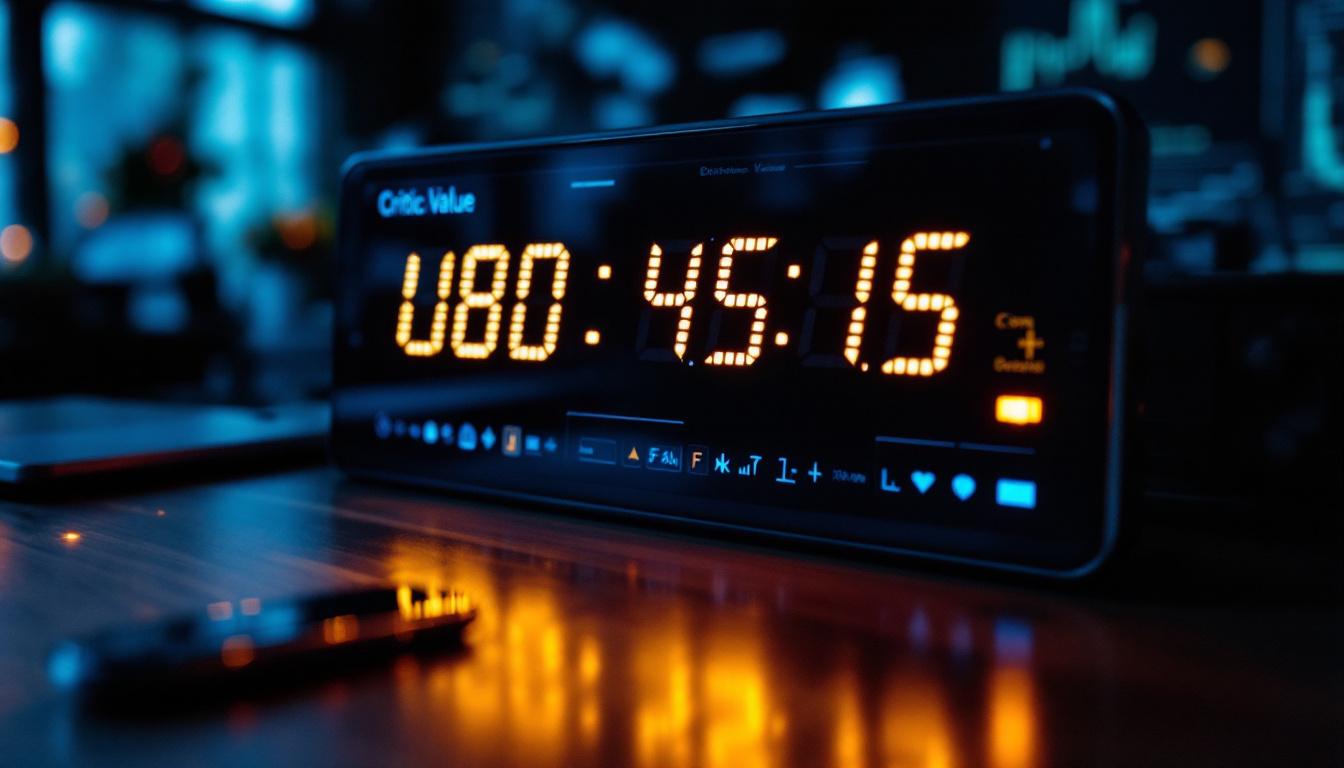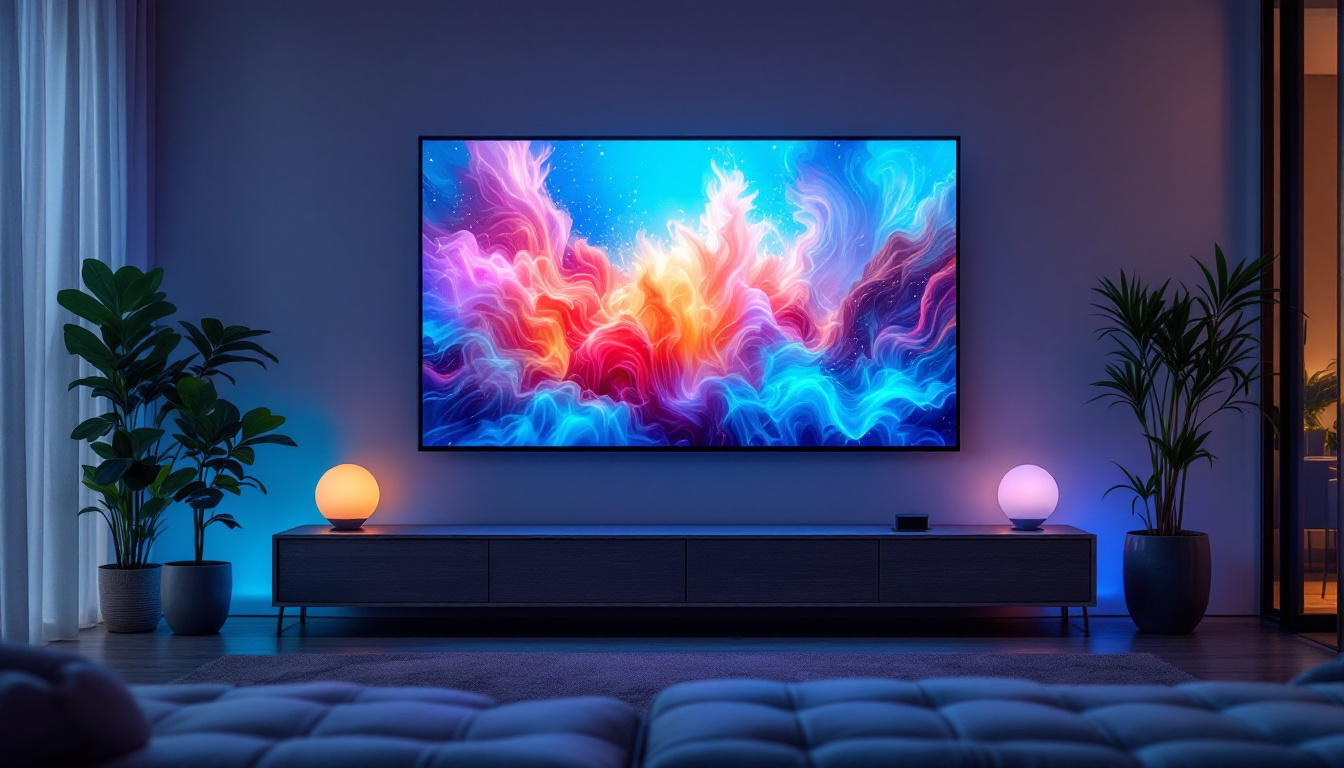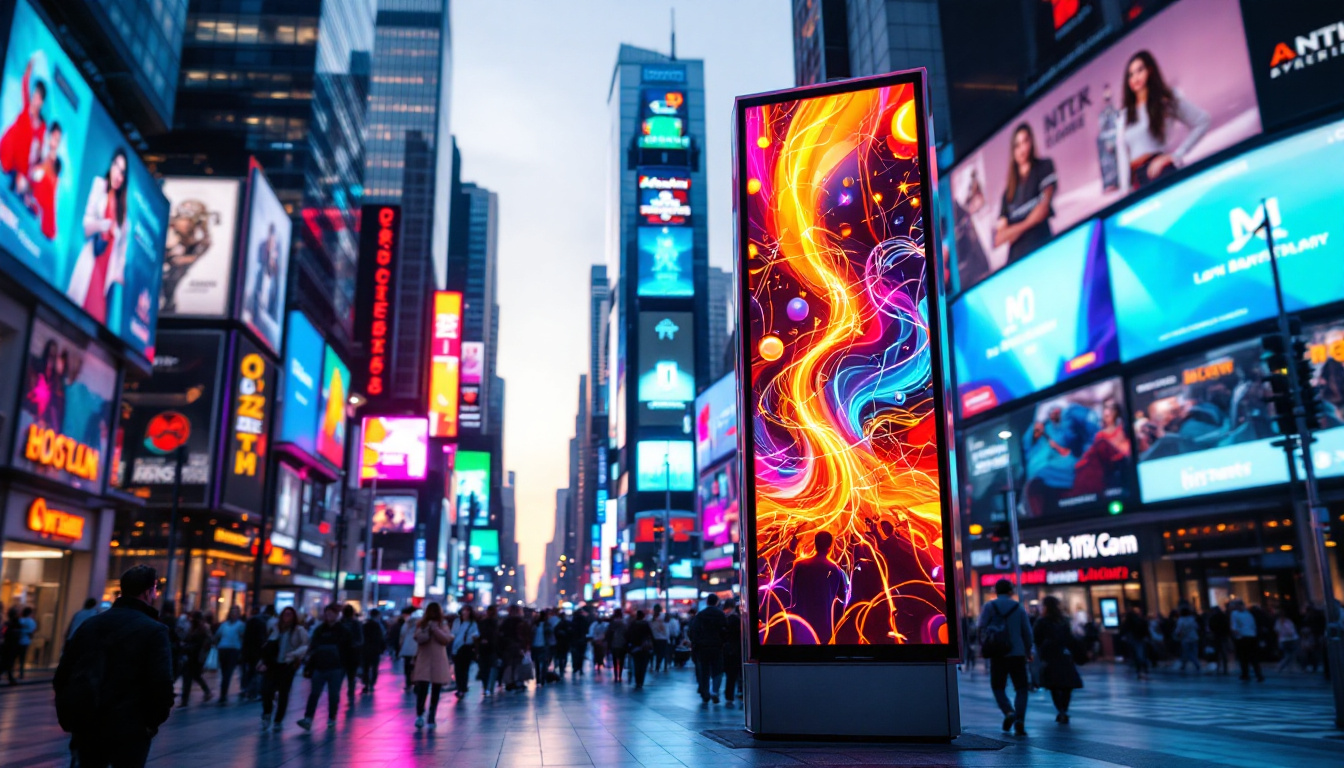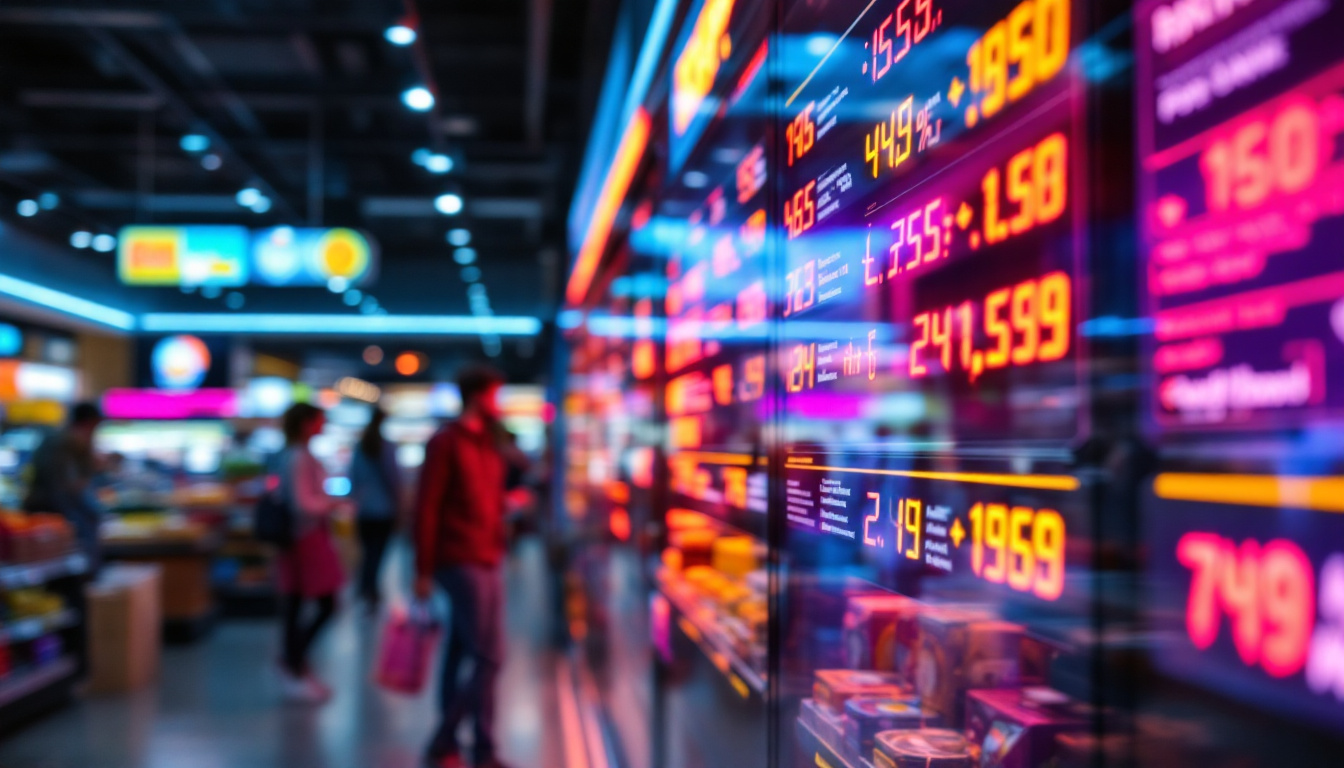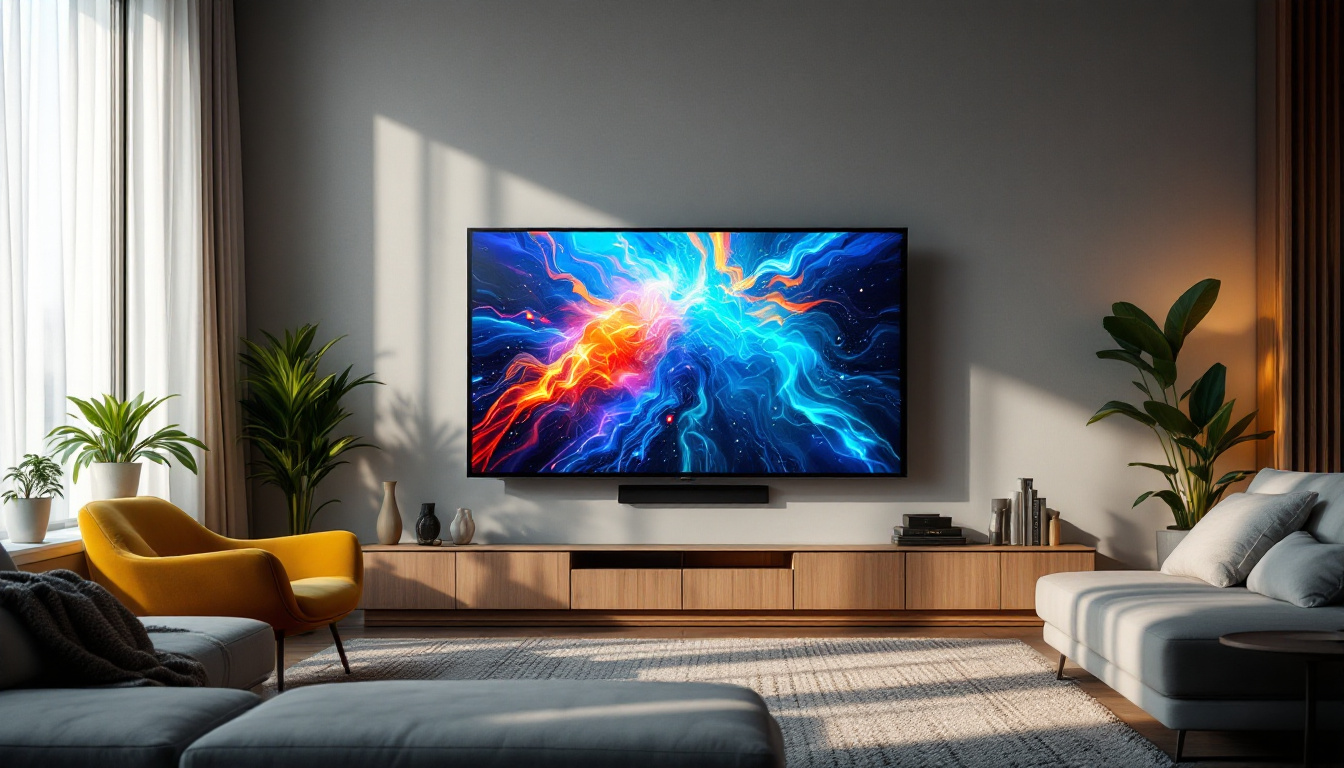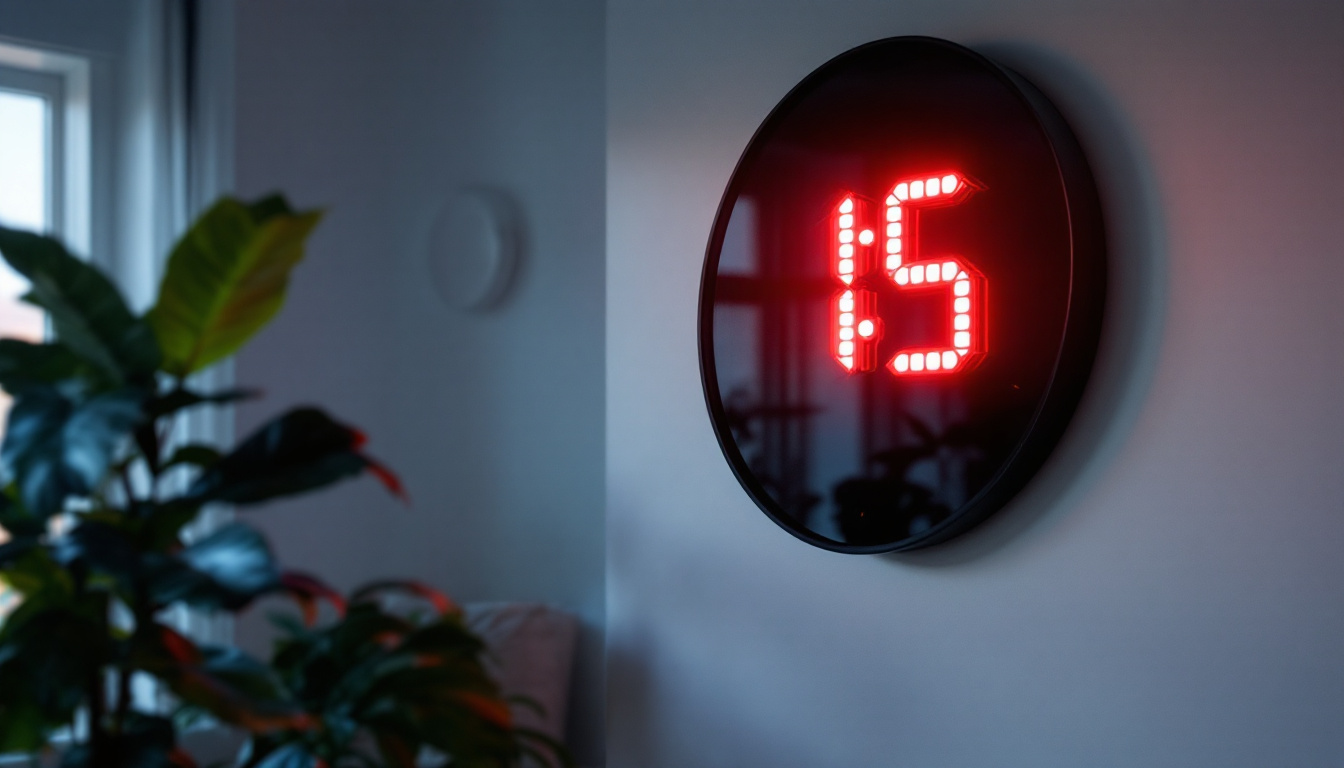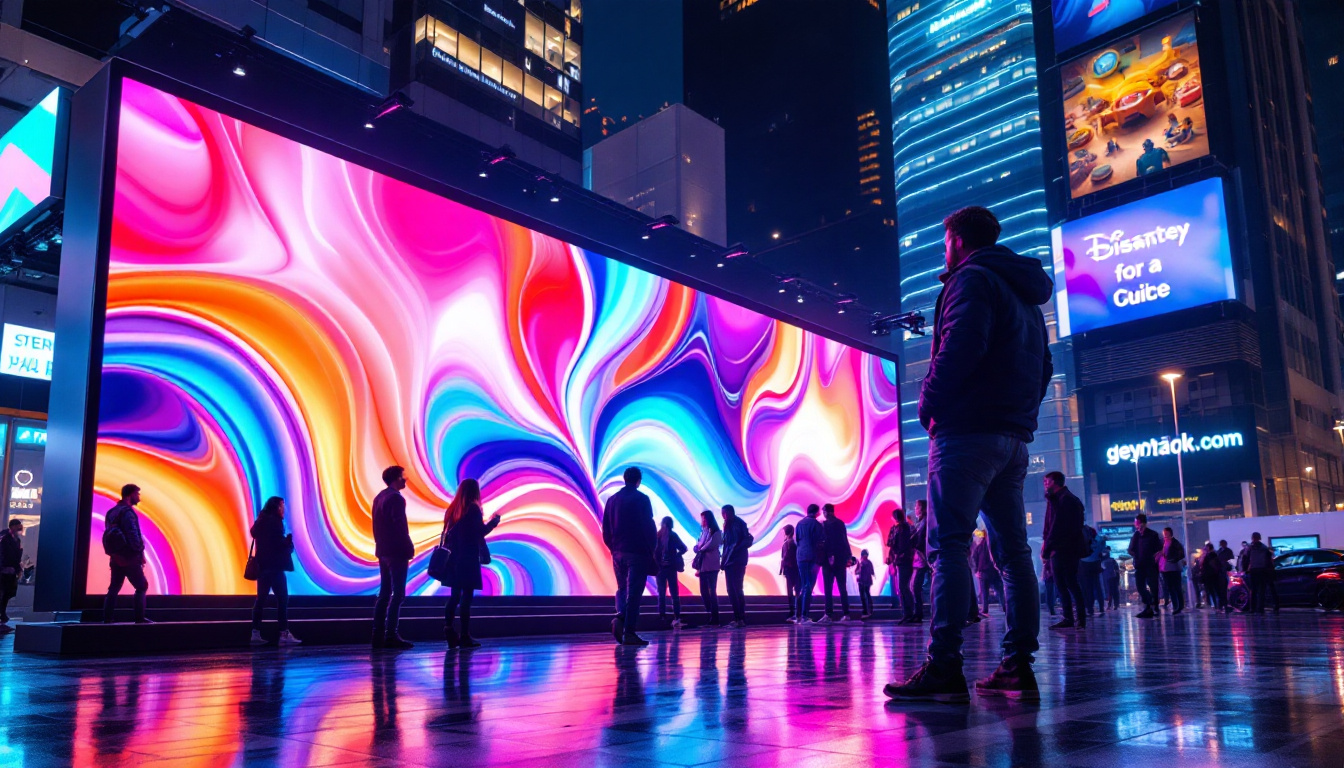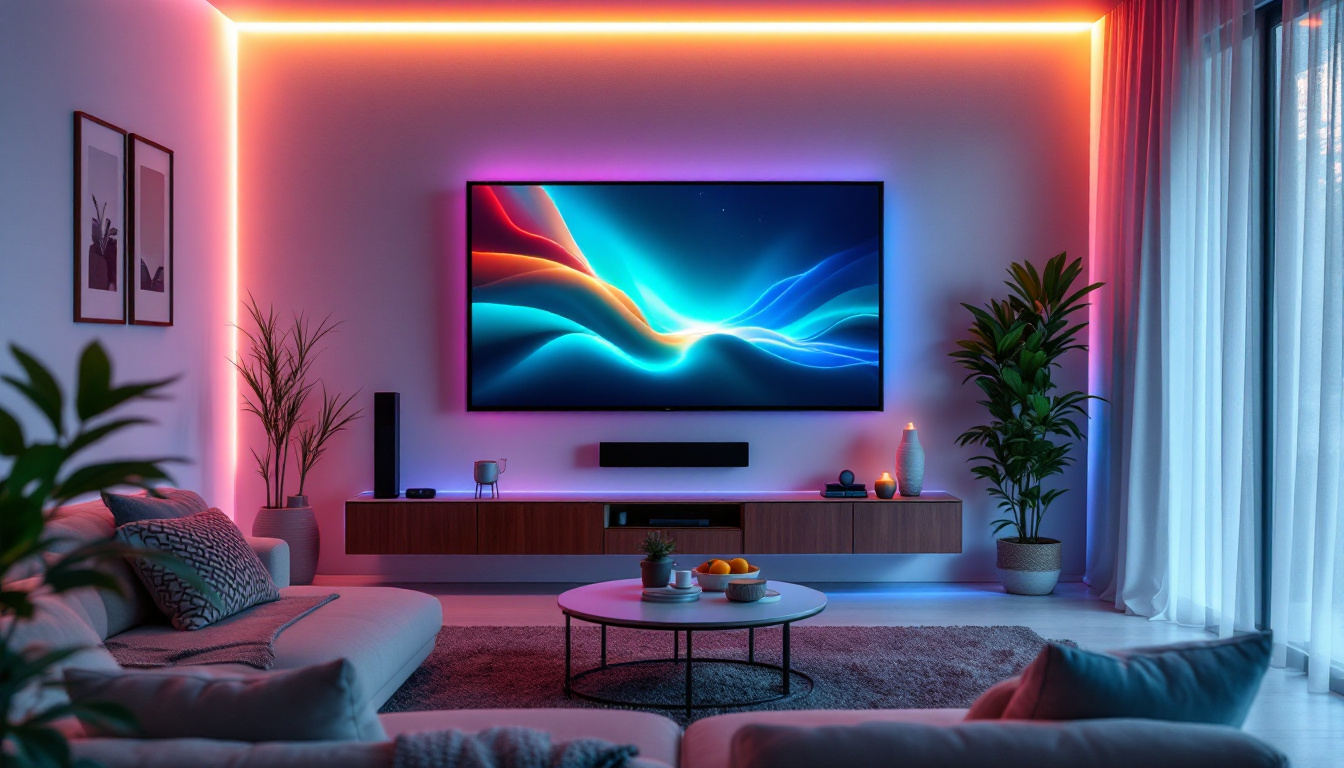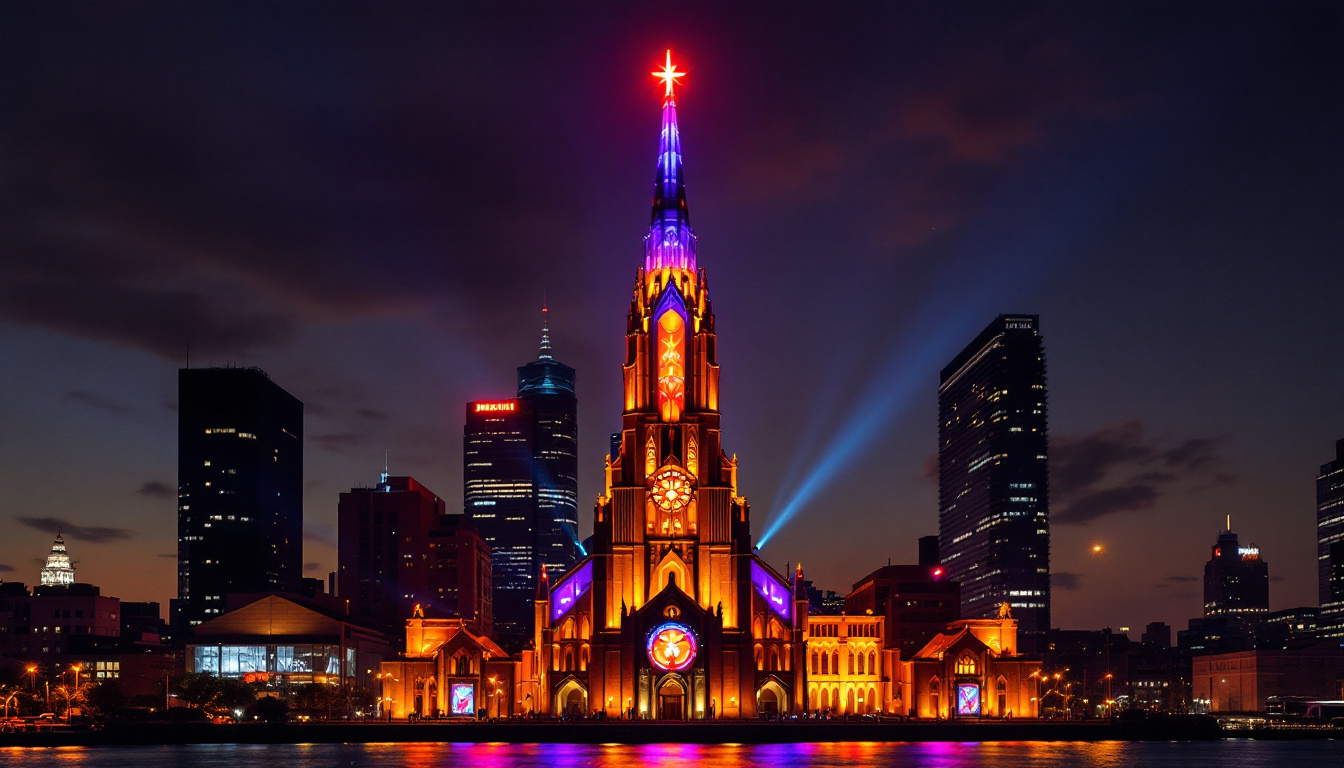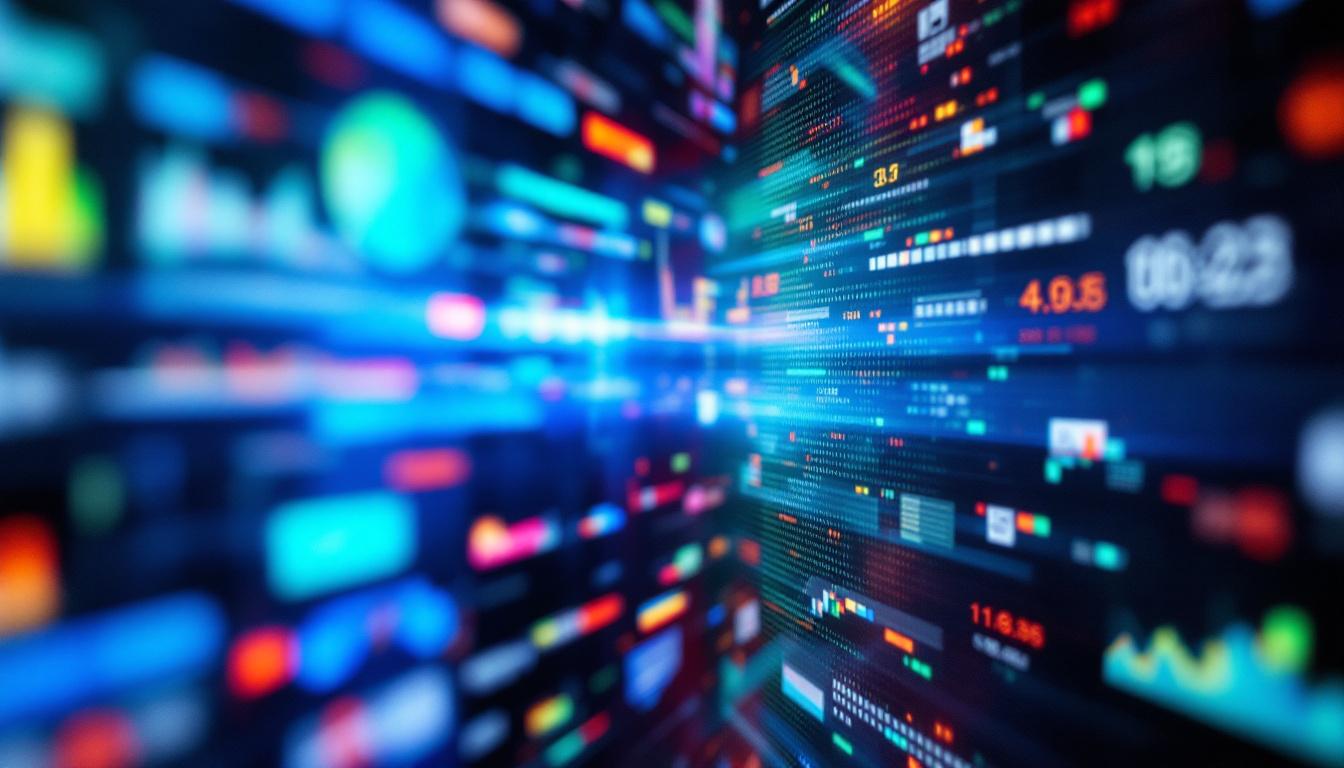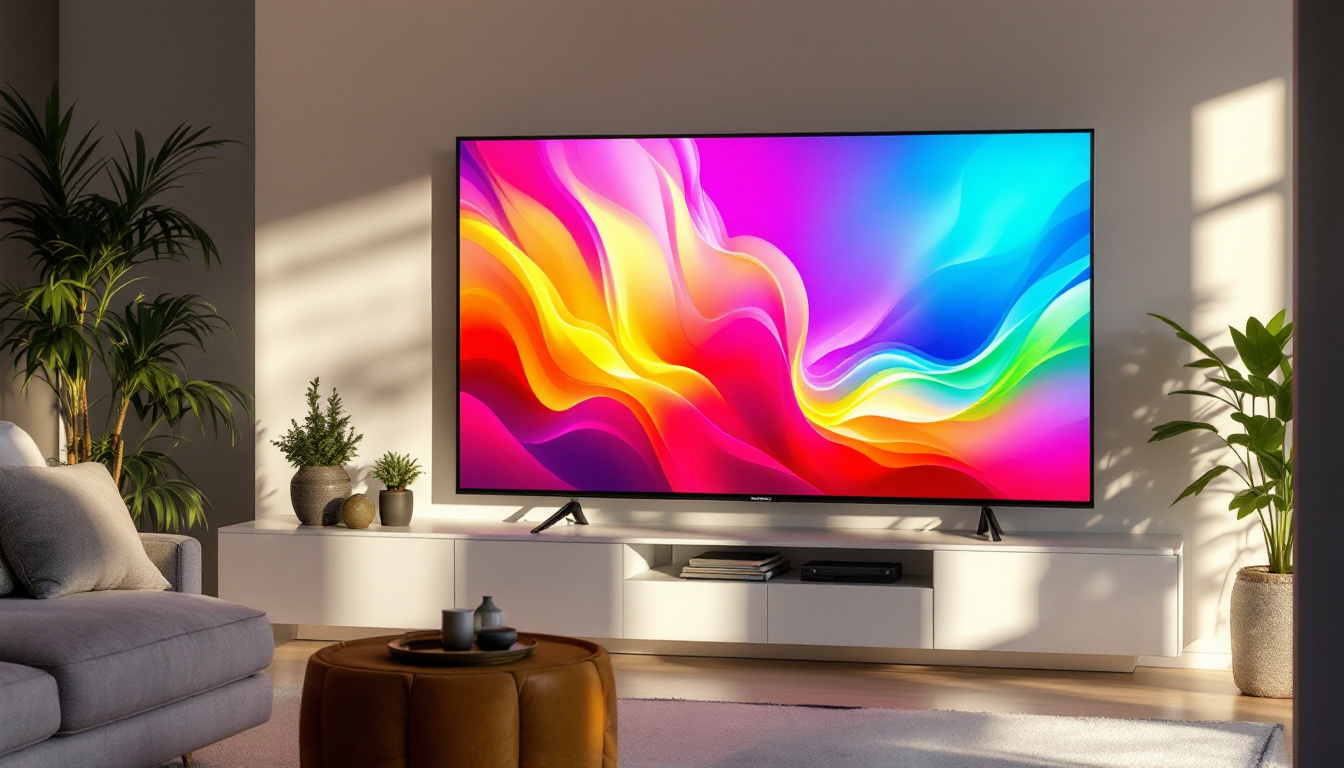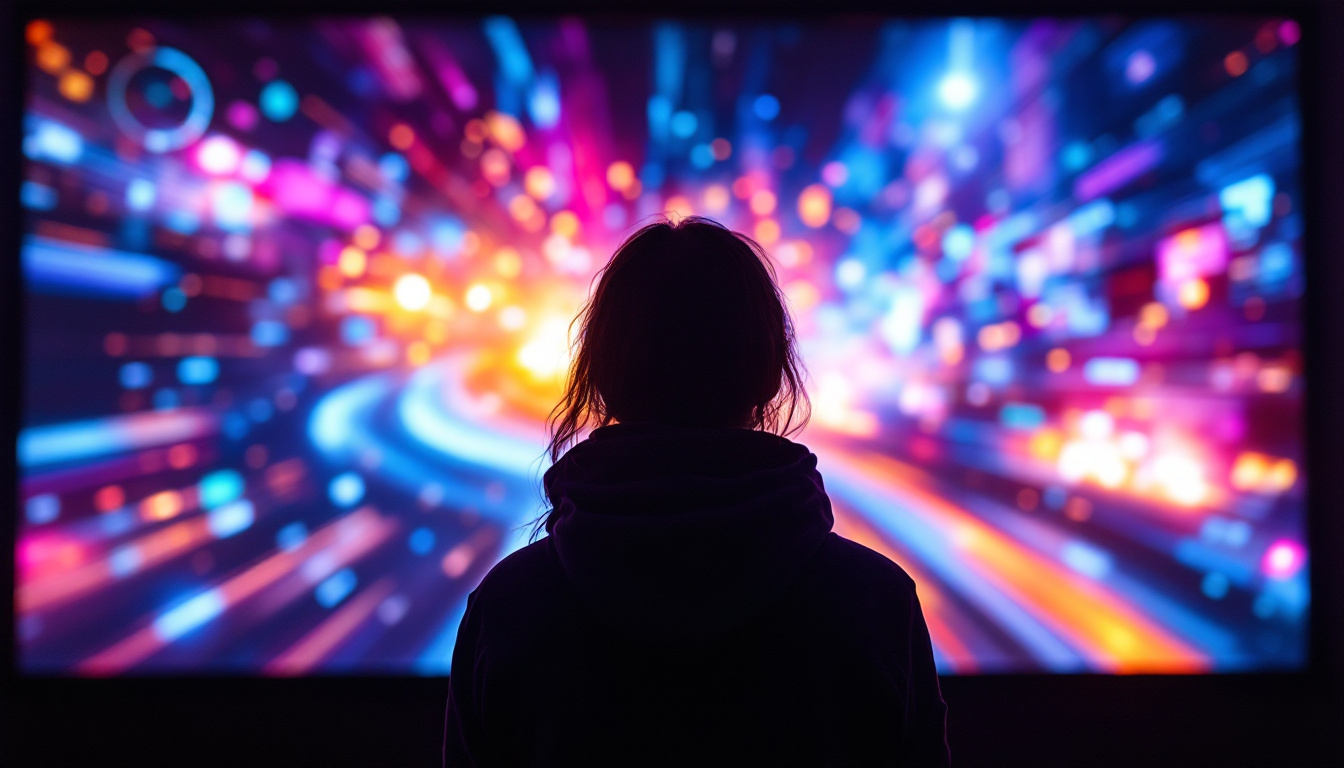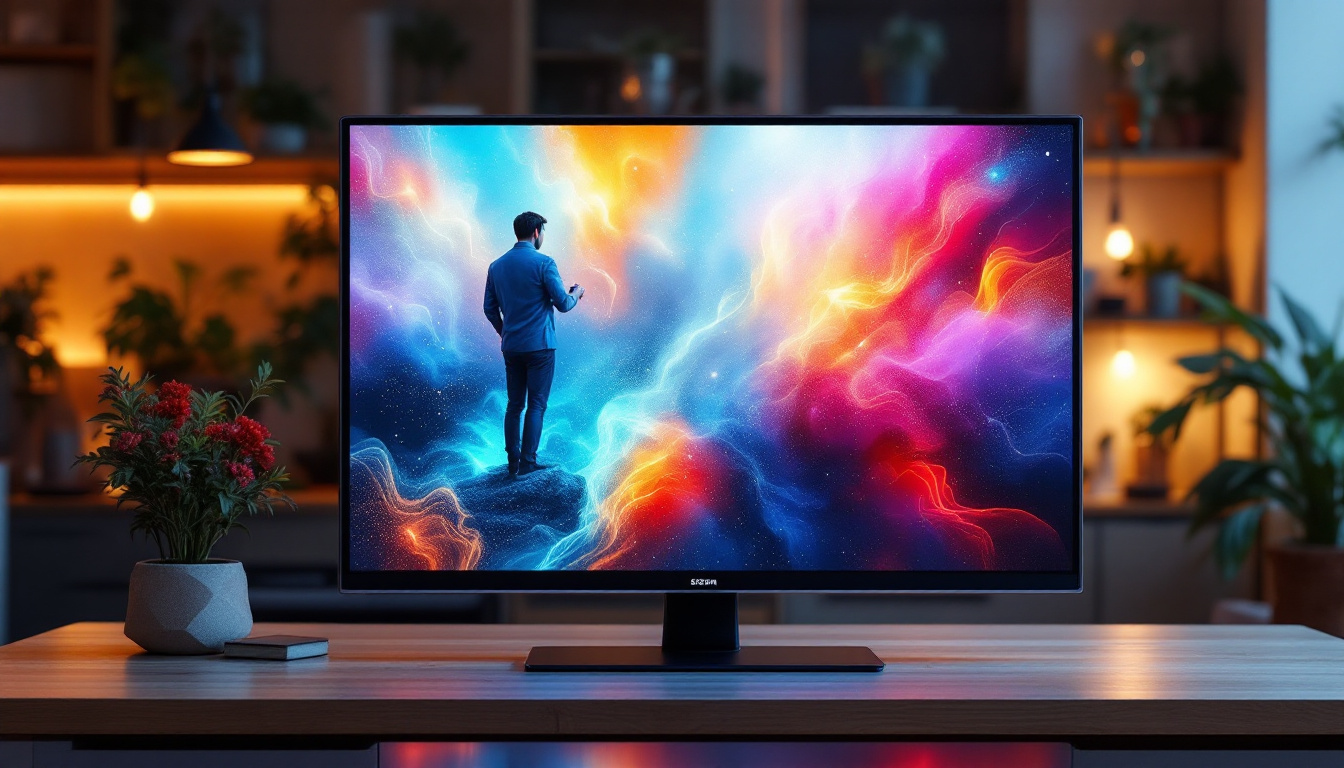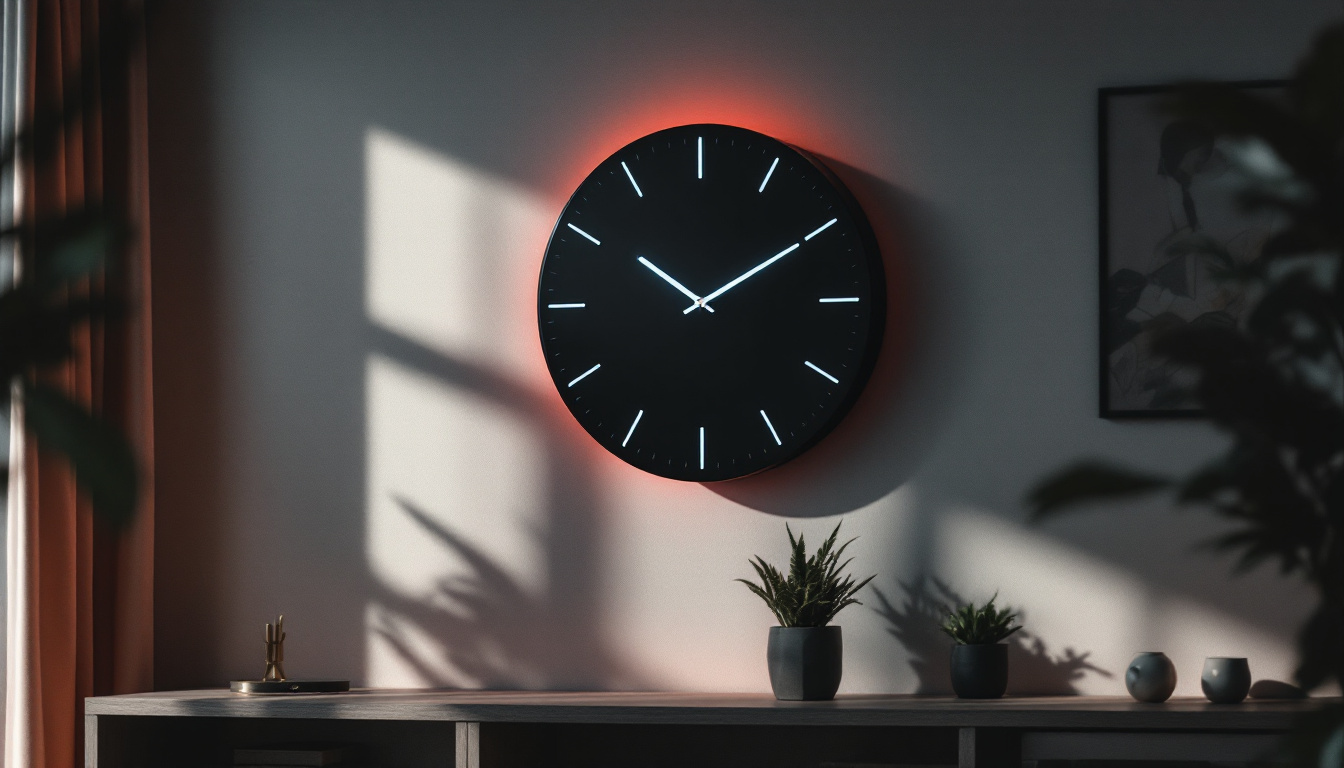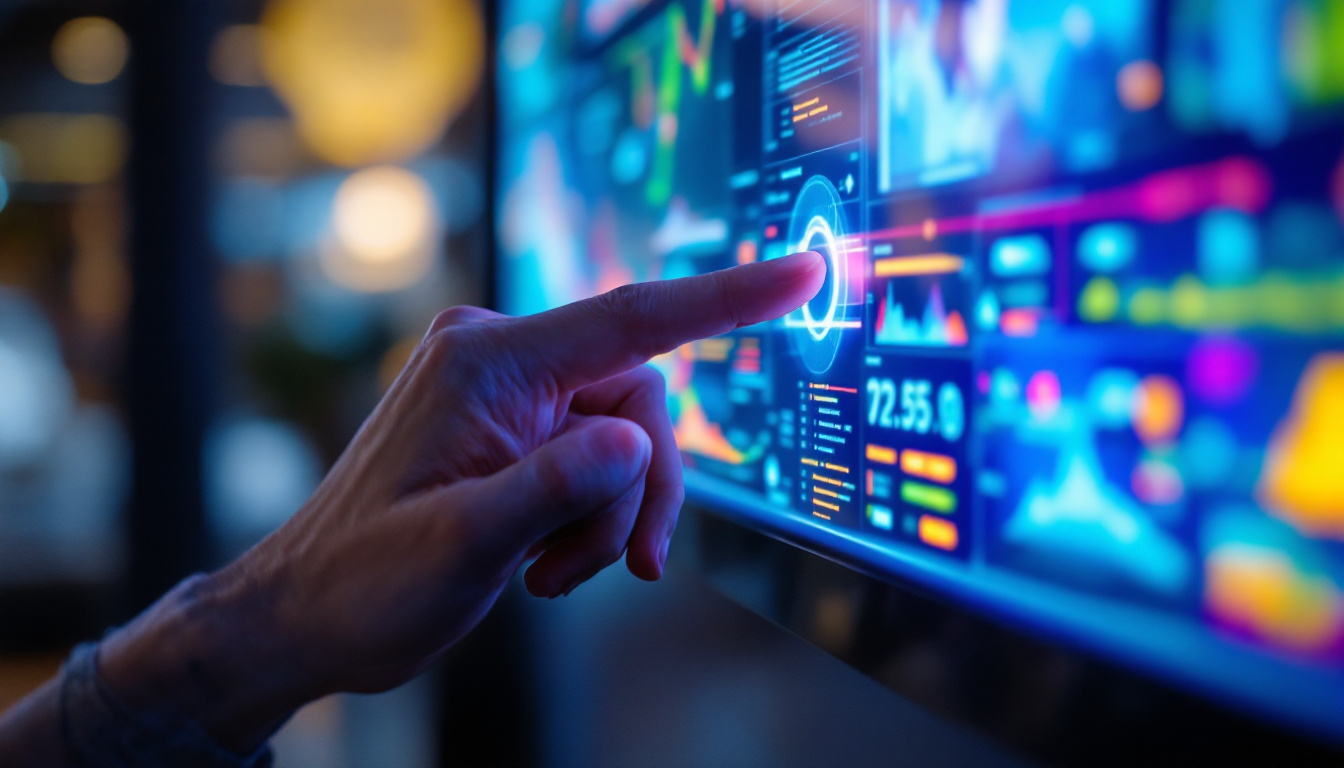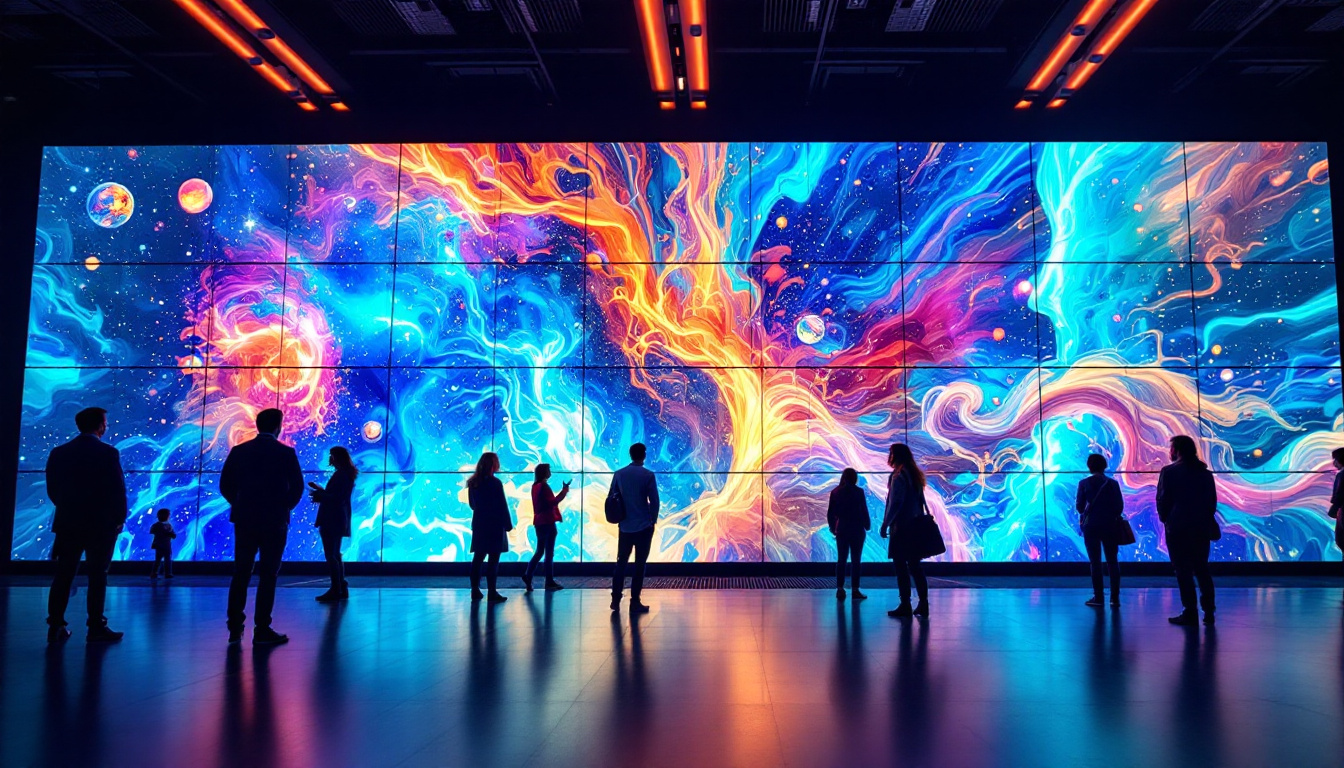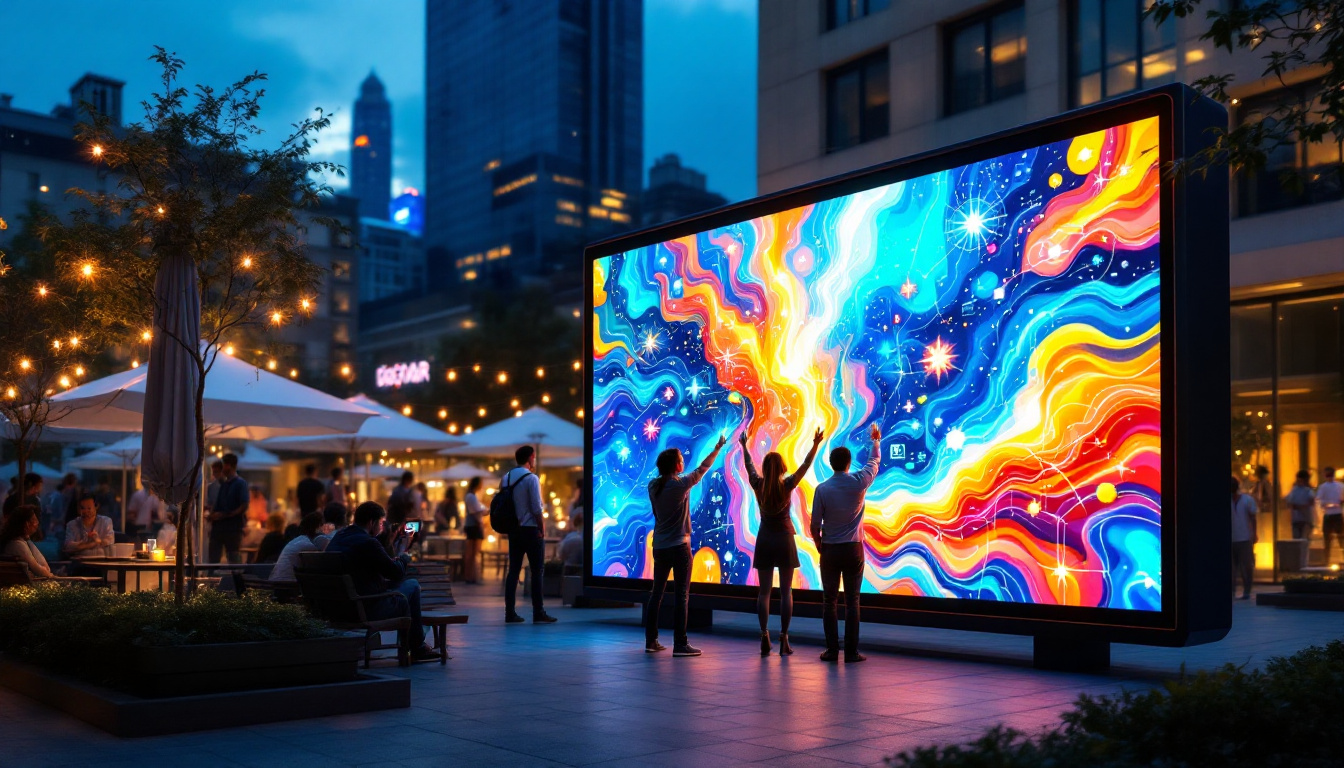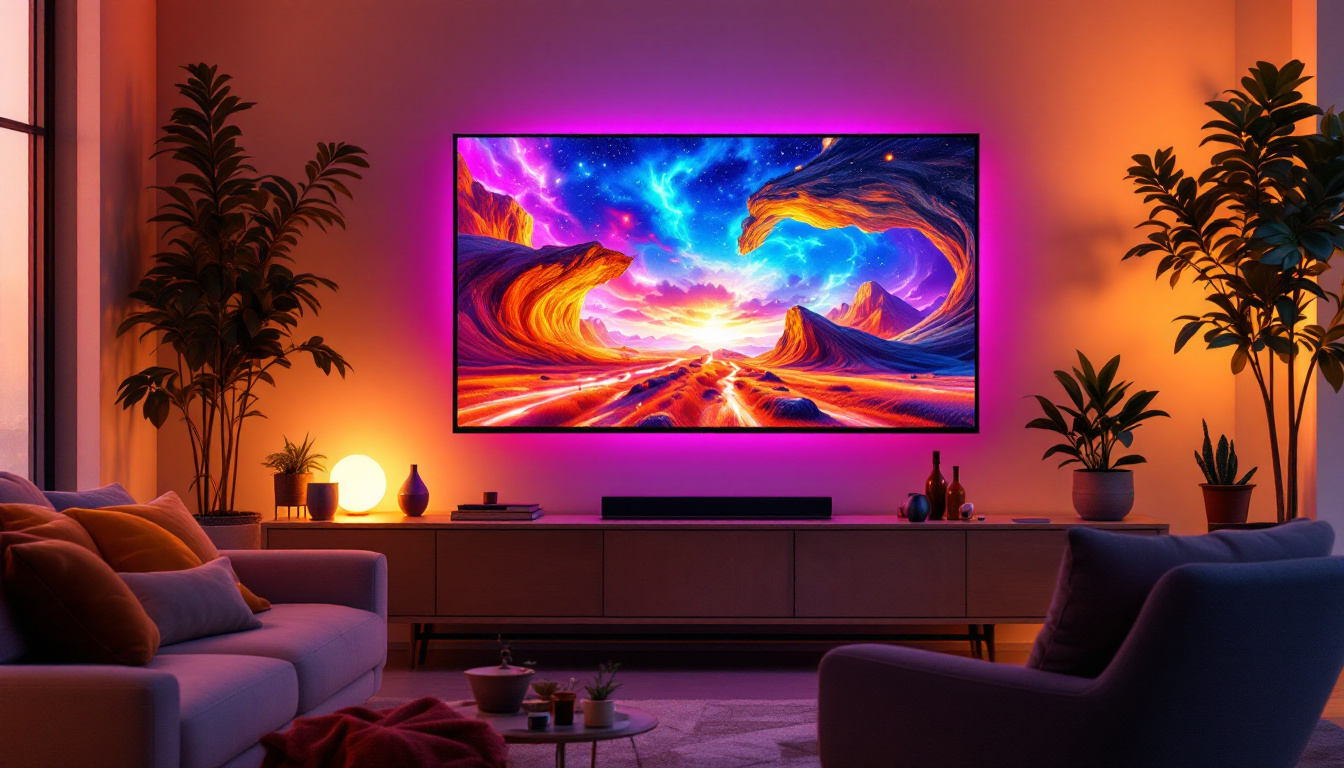In the world of modern entertainment and events, LED displays have become an essential component for captivating audiences. From concerts to corporate events, the versatility and vibrancy of LED technology have transformed the way visual content is presented. This article delves into the intricacies of LED displays, their types, advantages, and applications, providing a comprehensive understanding of this dynamic technology.
Understanding LED Technology
LED, or Light Emitting Diode, is a semiconductor device that emits light when an electric current passes through it. This technology has revolutionized the display industry, offering brighter, more efficient, and longer-lasting alternatives to traditional lighting and display methods. The compact size and versatility of LEDs have made them a popular choice not only for screens but also for various applications, from automotive lighting to architectural illumination.
How LED Displays Work
LED displays consist of numerous tiny diodes that emit light in various colors. These diodes are arranged in a grid format, allowing for the creation of images and videos. The basic principle involves controlling the intensity of light emitted by each diode to produce a full spectrum of colors. This is achieved through a process called pulse-width modulation (PWM), which adjusts the brightness of each pixel based on the content being displayed. The rapid switching of the diodes creates the illusion of smooth motion and vibrant colors, making LED displays ideal for dynamic content such as advertisements and live broadcasts.
The Components of LED Displays
Several key components make up an LED display, including:
- LED Modules: These are the building blocks of an LED display, containing clusters of LEDs that form pixels.
- Control Systems: These systems manage the content displayed on the screen, processing signals from video sources and ensuring synchronization.
- Power Supply: A reliable power supply is crucial for maintaining the performance and longevity of an LED display.
In addition to these primary components, LED displays also incorporate advanced cooling systems to dissipate heat generated during operation. Effective heat management is essential to prevent overheating, which can lead to reduced performance and a shorter lifespan of the display. Furthermore, many modern LED displays are designed to be modular, allowing for easy maintenance and scalability. This modularity enables users to expand or reconfigure their display setups according to specific needs, whether for large outdoor billboards or smaller indoor screens.
Another significant aspect of LED technology is its environmental impact. Compared to traditional lighting solutions, LEDs consume significantly less energy, leading to lower electricity bills and reduced carbon footprints. Additionally, LEDs do not contain harmful substances like mercury, making them a safer choice for both consumers and the environment. As the demand for energy-efficient lighting solutions continues to grow, LED technology is expected to play an increasingly vital role in sustainable development across various sectors.
Types of LED Displays
There are various types of LED displays, each designed for specific applications and environments. Understanding these types can help in selecting the right display for a particular event or venue.
Indoor LED Displays
Indoor LED displays are designed for use in controlled environments, such as theaters, conference rooms, and retail spaces. They typically feature a higher pixel density, resulting in sharper images and videos viewed from closer distances. These displays are often used for presentations, advertising, and entertainment purposes. The versatility of indoor LED displays also allows for seamless integration with other technologies, such as sound systems and interactive touch screens, enhancing the overall user experience. Additionally, many indoor models come with customizable features, allowing businesses to tailor the content to suit specific themes or events, making them a popular choice for dynamic marketing campaigns.
Outdoor LED Displays
Outdoor LED displays are built to withstand harsh weather conditions and provide high visibility in bright sunlight. They are commonly used for billboards, sports arenas, and public events. These displays have a lower pixel density compared to indoor models, as they are typically viewed from greater distances. Furthermore, outdoor LED displays often incorporate advanced technologies such as automatic brightness adjustment, ensuring that the content remains clear and vibrant regardless of the ambient lighting conditions. Many outdoor displays are also designed with energy efficiency in mind, utilizing lower power consumption while maintaining high brightness levels, which is particularly beneficial for long-term installations.
Transparent LED Displays
Transparent LED displays are an innovative solution that allows for visibility through the screen while still presenting vibrant images. This type of display is often used in retail environments, where it can showcase products without obstructing the view of the store interior. The technology behind transparent displays is still evolving, but it offers exciting possibilities for creative advertising. For instance, brands can create immersive experiences by layering digital content over physical products, effectively merging the digital and physical shopping experiences. Additionally, transparent displays can be used in architectural applications, allowing buildings to maintain their aesthetic appeal while providing dynamic visual content, thus transforming traditional advertising into an engaging and interactive experience.
Advantages of LED Displays
The rise of LED technology has brought numerous advantages to the display industry, making it a preferred choice for many applications. Here are some of the key benefits:
Energy Efficiency
LED displays consume significantly less power than traditional display technologies, such as LCD and plasma screens. This energy efficiency not only reduces operational costs but also lowers the carbon footprint, making LED displays an environmentally friendly option.
High Brightness and Contrast
One of the standout features of LED displays is their ability to produce high levels of brightness and contrast. This makes them ideal for outdoor use, where sunlight can wash out images on less capable displays. The vibrant colors and deep blacks of LED technology enhance the viewing experience, making it more engaging for audiences.
Durability and Longevity
LED displays are known for their durability and long lifespan. Unlike traditional displays that may suffer from burn-in or other issues, LED technology is robust and can withstand the rigors of frequent use. This longevity translates to lower maintenance costs and a better return on investment over time.
Applications of LED Displays
LED displays have found their way into a multitude of applications across various industries. Their versatility allows them to be used in creative ways, enhancing communication and engagement.
Entertainment Industry
In the entertainment sector, LED displays are ubiquitous. They are used in concerts, festivals, and live events to create stunning visual backdrops and enhance the overall experience. The ability to display dynamic content in real-time allows for a more immersive atmosphere, captivating audiences and elevating performances.
Advertising and Marketing
Digital signage powered by LED displays has transformed advertising strategies. Businesses can use these displays to showcase promotions, products, and services in high-traffic areas. The eye-catching nature of LED technology draws attention, making it an effective tool for marketing campaigns.
Corporate Communication
In corporate environments, LED displays are utilized for presentations, meetings, and internal communications. Their clarity and brightness ensure that information is conveyed effectively, whether in a boardroom or at a large conference. Additionally, they can be integrated with interactive technology to facilitate engagement during presentations.
Choosing the Right LED Display
Selecting the appropriate LED display for a specific application requires careful consideration of several factors. Understanding these factors can lead to a more informed decision and a better overall experience.
Pixel Pitch
Pixel pitch refers to the distance between the centers of adjacent pixels. A smaller pixel pitch indicates a higher resolution, making it suitable for close viewing distances, such as indoor displays. Conversely, a larger pixel pitch is acceptable for outdoor displays, where viewers are typically farther away.
Brightness Levels
Brightness is a crucial factor, especially for outdoor displays. The brightness level, measured in nits, determines how well the display performs in various lighting conditions. For outdoor environments, a minimum brightness of 5,000 nits is recommended to ensure visibility in direct sunlight.
Installation and Maintenance
Consideration should also be given to the installation and maintenance requirements of the LED display. Some displays are designed for easy installation and can be mounted in various configurations, while others may require specialized installation services. Additionally, understanding the maintenance needs can help in planning for long-term use.
The Future of LED Displays
The future of LED displays looks promising, with ongoing advancements in technology and design. Innovations are continuously emerging, pushing the boundaries of what is possible in display technology.
Advancements in Technology
As technology evolves, LED displays are becoming more sophisticated. Developments in microLED and OLED technologies are paving the way for even higher resolutions, improved color accuracy, and greater flexibility in design. These advancements are likely to lead to new applications and uses for LED displays in various fields.
Integration with Smart Technology
The integration of LED displays with smart technology is another exciting trend. Displays can now be connected to the Internet of Things (IoT), allowing for real-time content updates, remote management, and interactive features. This connectivity enhances the functionality of LED displays, making them more versatile and user-friendly.
Environmental Considerations
As sustainability becomes a priority across industries, LED displays are being designed with eco-friendly materials and energy-efficient technologies. Manufacturers are focusing on reducing waste and improving recyclability, ensuring that LED displays contribute positively to environmental efforts.
Conclusion
LED displays have revolutionized the way visual content is presented, offering unmatched brightness, energy efficiency, and versatility. From indoor environments to outdoor applications, the adaptability of LED technology has made it a staple in various industries. As advancements continue to shape the future of LED displays, their role in enhancing communication, entertainment, and marketing will only grow stronger. Understanding the intricacies of LED displays enables informed decisions, ensuring that businesses and event organizers can leverage this technology to its fullest potential.
Discover LumenMatrix’s Innovative LED Solutions
As you consider the future of your visual displays, remember that LumenMatrix is at the forefront of LED display technology, offering a wide array of solutions tailored to your needs. Whether you’re looking to enhance your brand’s visibility, create immersive environments with Indoor LED Wall Displays, captivate passersby with Outdoor LED Wall Displays, or innovate with Vehicle LED Displays and Transparent LED solutions, LumenMatrix has the expertise to bring your vision to life. Embrace the power of LED technology and Check out LumenMatrix LED Display Solutions today to transform your visual communication and engage your audience like never before.

